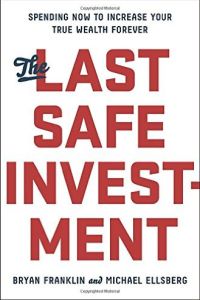
After the government announced that gathering of more 10 persons banned, we've been trying to pivot into Webinars, so I have spent the greater part of the weekend trying to translate my training program into a webinar.
The work to pivot was much harder than I thought and other trainers may want to read this before going ahead.
(Why do I want to share my training intelligence with other trainers? Simple, I believe one-day investment trainers will be asking me to train them! BWAHAHAHA !)
a) Webinars are labour intensive
My biggest fear was that webinars are so easy to run, there will be thousands of competing training programs in the near future. As it turns out, this is farther from the truth. While I proceed with my training at a much slower pace, my colleagues spent the entire time troubleshooting connection issues.
Their work is worse than IT operations because even if a server fails we have an hour to get it back up. My trainees miss one hour, it is as good as not attending the course.
Make sure there is a team working when a webinar is happening.
b) Better for the team to be located together during the webinar
As a webinar is a performance to a large remote crowd, don't make of the mistake that you can do the webinar remotely vis a vis your teammates. A lot of coordination takes place real-time.
In my case, there is a time delay between my narration and the time my students receives the message. Without another teammate logging in as a virtual student, I can't estimate what that time is.
I also received an urgent call from health authorities halfway while conducting a quiz ( SHIT! ). My teammate took over. Turns out they just want to arrange to delivery of medication.
Anyway, this may be unavoidable as we lock down further. I now have all the infrastructure to conduct the next session from home. I need to cordon my kids off if I have to do that.
c) Attention span is different in a webinar
We took the decision not to risk the quality of the training by stretching the training from 2 days to 4 days. This gives more time for Q&A, which comes in a greater volume in a webinar format and prevent students from losing focus. I can definitely rush through investment training, but I am unique in that I invest in my student's portfolio. This forces us to put a premium on quality.
d) IP issues take centre stage
It is much harder to defend your IP when you go webinar. We rushed into this without much forethought (unforgivable, as I am legally trained). You need a web of NDAs and physical measures to protect your IP. My material changes each lecture but trainers need to spend more time on this.
In can introduce my professor to anyone who is interested in such matters.
Just contact me privately, even if you are a market rival.
e) Never go full 100% webinar no matter how bad the situation is
It never ceases to disturb me when I see an ad slashing a $1,800 course into a $19 webinar. The decision to go online will kill most legitimate businesses, including my own. So right now I am willing to add one day of face time to all my students when lockdowns are over.
It will be one full day of practice sessions I intend to model after this Software Development school called 42.
While I am not Dua Lipa, I am pretty sure my physical presence nets my business partners more than simply just downloading my disembodied voice.
This blog continues to post with lower frequency as I put renewed focus on my ERM FB community.
I will see you guys probably one more time this week where I post a personal update.
More next week when my class is over.





